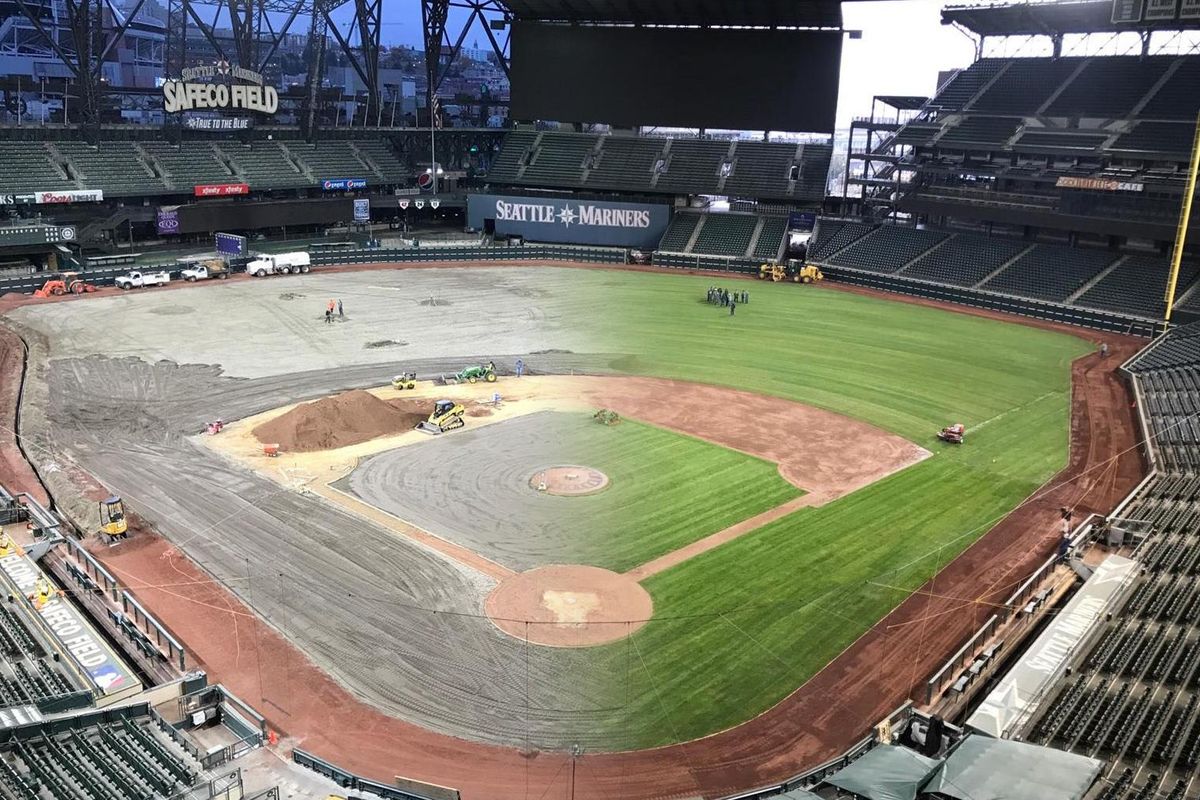Spokane company helps renovate Safeco Field playing surface

Mark Albin got called up recently to the big leagues.
The Seattle Mariners weren’t looking for somebody who could hit a baseball 400 feet or throw a pitch 100 miles per hour. They wanted to renovate the playing surface at Safeco Field and contacted A.M. Landshaper Inc., founded by Albin and fellow Spokanite Tye McGee in 1992.
After unloading equipment at Safeco on Oct. 4 it was nighttime with the lights on and the roof open. Albin and his team of eight walked around for about 20 minutes taking pictures.
“It really felt like we had been called up from the minors,” Albin said.
A.M. Landshaper had a proven record for their field work, beginning with Gonzaga’s Patterson Baseball Complex and eventually GU’s and Washington State’s soccer fields and Whitworth football’s artificial turf.
“Mark and A.M. Landshaper have done world-class work for Gonzaga athletics,” athletic director Mike Roth said. “The (baseball and soccer) playing surfaces are tops in the country. Every team that has ever played on them always comments they’re the best they’ve played on.”
Before the call from the Mariners there was an equally important call from Dave Anderson, principal engineer for D.A. Hogan and Associates. The Seattle-based company’s resume is filled with pro and college projects, including the Seahawks, Green Bay Packers, Oregon, Oregon State, West Virginia and Washington State.
Anderson designed a 2014 renovation to WSU’s soccer complex and dialed up A.M. Landshaper, which served as the general contractor. About a year later Anderson phoned again, this time from Safeco Field to tell Albin he was recommending A.M. Landshaper to longtime Mariners head groundskeeper Bob Christofferson, who wanted some in-season grading done on the infield.
“That was my introduction to the Seattle Mariners,” Albin said.
Christofferson wanted to do a complete renovation for years, even though his crew had kept the surface looking aesthetically beautiful. The grass at Safeco, which opened in 1999, was thought to be the oldest in Major League Baseball and the surface had grown 4 inches with the annual addition of 160 tons of sand, according to a video on the Mariners’ website.
Christofferson received approval for the renovation late in the 2017 season. The timing was tricky with the Mariners remaining in the wild-card race until mid-September.
“Bob said, ‘How busy are you?’ ” Albin recalled. “I said, ‘We’re doing some work but we’d certainly figure out how to get there.’ There are only 30 major league ballparks and typically you don’t get these things without a pretty big resume.
“He asked how long we would need. I said, ‘six weeks.’ He said, ‘We got about three.’ The project was getting designed as we were starting.”
The work began in earnest Oct. 5, and they had company. It was media day and five television stations, two newspapers, one radio outlet and some of team owners were on hand. One TV station had a helicopter hovering above the field taking footage.
Albin’s team stayed at a hotel near Safeco and frequently put in 12-hour days. They helped strip the existing sod and remove about an inch of soil before installing all new soil blends for the infield, outfield and warning track.
Albin and company went to work on the grading with the assistance of a 3D laser scan that provided precise mapping and detected the smallest imperfections.
The new sod, installed by Olympia’s Country Green Turf Farms, is 100 percent bluegrass on the infield and in foul territory and a 50-50 bluegrass-ryegrass mix in the outfield. It was grown in Visqueen to promote a thick root mass and establish firm traction immediately, Albin said.
The field has underground heating with miles of pipe that keeps the ground temperature warm enough for the grass to avoid dormancy in winter. An underground drainage system is hooked up to a 200 horsepower electric motor that can suck air out or insert air to get oxygen to the grass roots.
Safeco’s makeover took roughly four weeks from start to finish.
“It was very rewarding,” Albin said. “We feel like we do really good work and we feel like we’ve done some great things in our area. To get into a (professional) arena, it was a little intimidating but Bob did a great job of making us feel like we belonged.”